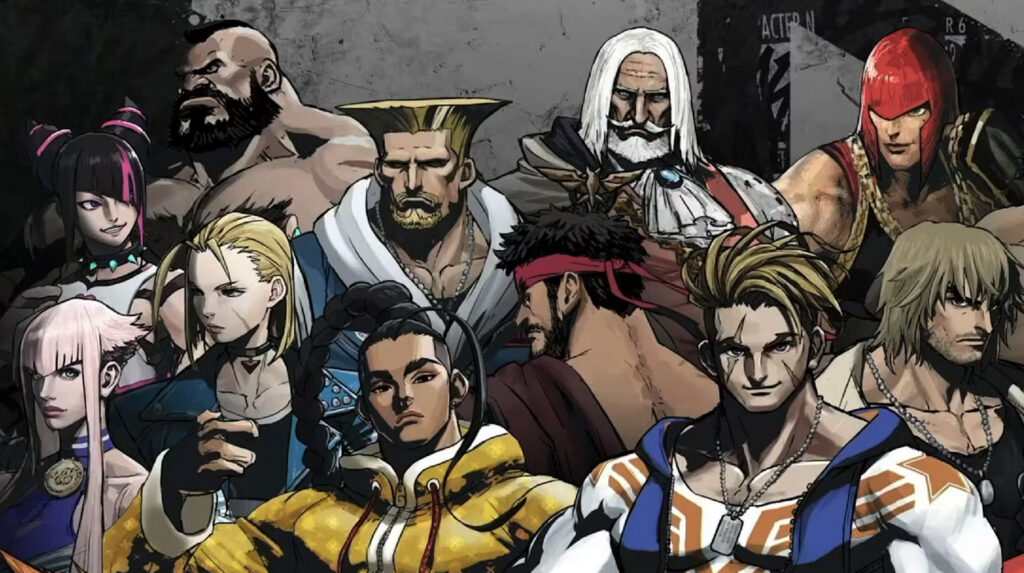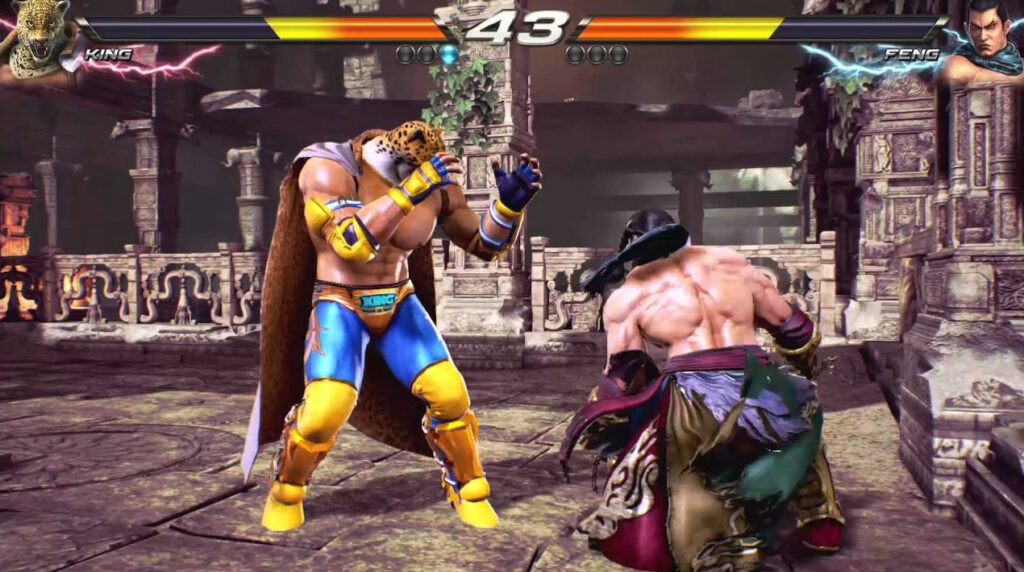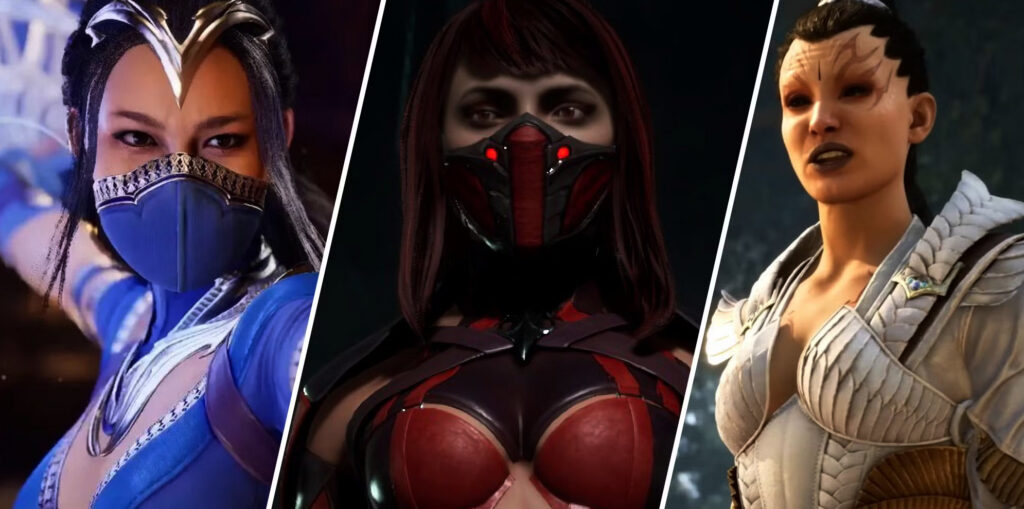Introduction to the Tekken Franchise
The Tekken franchise, developed and published by Bandai Namco Entertainment, stands as one of the most iconic and enduring series in the fighting game genre. Debuting in 1994, the franchise has seen a continuous evolution over the years, becoming a staple in competitive gaming and the wider esports community. The series has not only captivated players with its innovative gameplay mechanics but has also presented intricate storylines and character development that resonate deeply with its audience.
Since its inception, Tekken has expanded its roster to include a diverse array of characters, each with their unique fighting styles and backstories. This character variety allows players to find fighters that truly match their individual playstyles, contributing to the series’ expansive appeal. From the martial arts-focused moves of iconic characters like Kazuya Mishima to the unorthodox techniques of fighters such as Paul Phoenix, each installment builds upon the legacy of its predecessors while introducing new elements that keep the gameplay fresh and engaging.
The franchise has also pioneered numerous innovations in the fighting game landscape, including the introduction of 3D arena-based combat, which has influenced a multitude of games within the genre. Tekken’s signature mechanic of creating a three-dimensional combat environment allows for strategic movement and depth, distinguishing it from traditional 2D fighters. This foundational aspect of gameplay is a critical factor in both Tekken 7 and the upcoming Tekken 8, drawing on the series’ rich history while incorporating modern gaming advancements.
As we delve into a more detailed comparison of Tekken 7 and Tekken 8, it is essential to recognize the significance of the Tekken franchise as a whole. Each new installment not only honors the legacy of its predecessors but also strives to push the boundaries of what is possible in fighting games, ensuring Tekken remains relevant in an ever-competitive gaming landscape.
Overview of Tekken 7
Tekken 7, released in arcades in 2015 and later for consoles in 2017, marked a significant entry in the long-running Tekken franchise. This installment introduced the “Uncharted” mechanics, which allowed players to capitalize on their opponents’ mistakes through a new feature called Rage Arts. This mechanic not only elevated the excitement during matches but also encouraged a strategic approach to gameplay. Tekken 7 emphasized accessibility for newcomers while still catering to the complexities preferred by veteran players, leading to widespread acclaim.
The character roster expanded in this edition, boasting over 30 fighters. Classic characters like Jin Kazama and Kazuya Mishima returned, accompanied by newcomers such as Akuma from the Street Fighter series, enriching the Tekken universe. Each character came with unique fighting styles and backstories, providing players with diverse gameplay options. The introduction of the “Story Mode” further deepened the narrative experience, with players immersed in the ongoing struggle between the Mishima family. This storyline effectively tied in previous threads from earlier installments, enrapturing fans of the series.
Despite its strengths, Tekken 7 faced criticism as well. Some players pointed to the game’s reliance on certain mechanics, such as the rage system, which might feel overpowered in competitive play. Additionally, the netcode faced scrutiny from the community, with players expressing concerns about connectivity issues in online matches. Nevertheless, the game was celebrated for its impressive visuals and detailed environments, which enhanced the overall experience. Tekken 7 managed to blend traditional Tekken gameplay with modern mechanics, carving its place as the penultimate chapter in the series, while also leaving players eager for the next evolution in the franchise.
Exciting New Features in Tekken 8
Tekken 8 brings a host of innovative features that not only elevate the gaming experience but also set it apart from its predecessor. The most noticeable advancement lies in its updated graphics, which leverage next-gen capabilities to deliver stunning visuals. Character models exhibit intricate details, with more realistic animations and lifelike expressions, immersing players in the action like never before. Enhanced lighting effects and more dynamic environments contribute to an overall aesthetic that feels vibrant and engaging, making each fight visually spectacular.
Another significant development is the introduction of refined gameplay mechanics. Tekken 8 incorporates new systems designed to provide a fresh competitive edge. One such feature is the ‘Heat System,’ which allows players to unleash powerful attacks and enhance their characters temporarily during battles. This mechanic fosters a strategic layer to gameplay, encouraging players to utilize their characters’ strengths effectively while managing heat resources. The refinement of existing mechanics, combined with new tools like the Heat System, creates an environment promising both challenge and excitement for veterans and newcomers alike.
In addition to gameplay enhancements, Tekken 8 expands its roster with new characters and returning favorites, further enriching the diversity of styles available to players. Each character is meticulously designed, offering unique moves and strategies that cater to various playstyles. Furthermore, the game introduces new gameplay modes that focus on community engagement, such as enhanced team battles and tournament settings, which promote competitive play and social interaction among players. Overall, these groundbreaking features underscore how Tekken 8 aims to strengthen player experience while maintaining the essence of the beloved franchise, establishing its significance in the gaming community.
Graphics and Visual Improvements
Tekken 8 presents a significant leap in graphics and visual fidelity compared to its predecessor, Tekken 7. The advancements in character design are particularly noteworthy, with developers utilizing cutting-edge technology to create more lifelike and dynamic fighters. Each character’s details, from skin textures to facial expressions, exhibit unparalleled realism, enhancing the player’s emotional connection during gameplay. This increased realism not only highlights the unique attributes of each character but also contributes to a more immersive narrative experience within the game.
Moreover, the arenas in Tekken 8 have also seen substantial upgrades. The environments are now meticulously crafted, boasting intricate details and vivid color palettes that bring the fighting scenes to life. The addition of dynamic elements, such as interactive backgrounds that respond to the fighters’ moves, adds another layer of depth to the gameplay. This evolution in arena design allows players to experience a seamless blend of action and visual storytelling, which was less pronounced in Tekken 7.
Furthermore, the overall visual fidelity of Tekken 8 is a testament to the advancements in graphical technology. The incorporation of higher resolution textures and advanced lighting effects significantly enhances the game’s aesthetic quality. Shadows and reflections are rendered with stunning accuracy, creating a more dynamic atmosphere that amplifies the intensity of each battle. These improvements in graphics not only elevate the visual standard of the game but also set a new benchmark for future fighting games.
In essence, the visual enhancements in Tekken 8, encompassing character models, interactive arenas, and overall graphical quality, collectively contribute to a more engaging and lifelike gaming experience. These advances ensure that players are fully immersed in the vibrant world of Tekken, significantly surpassing the graphics of Tekken 7.
Character Roster Expansion and Evolution
The evolution of the character roster is a critical aspect when comparing Tekken 7 and its successor, Tekken 8. In Tekken 7, a rich collection of characters was available, featuring both returning favorites and newcomers, resulting in a diverse gameplay experience. Tekken 8 builds upon this foundation by expanding the roster further, introducing several fresh faces and reviving classic characters to keep robust player engagement.
Fan-favorite characters such as Jin Kazama, Kazuya Mishima, and Nina Williams return in Tekken 8, providing continuity and preserving the intricate narratives that have captivated the audience for decades. However, the introduction of new characters also presents an opportunity for innovative gameplay mechanics, unique fighting styles, and fresh storylines. Each addition is carefully designed to appeal to a wide audience, enticing both longtime fans of the series and newcomers who may be exploring the franchise for the first time.
Another essential aspect of character diversity in Tekken 8 is the ongoing commitment to balance adjustments. These adjustments not only enhance the competitive nature of the game but also ensure that every character has a unique role in matches. This balancing act allows players to experiment with different characters and playstyles, fostering an inclusive environment where various techniques can thrive. The evolution of character attributes and special moves takes strategic gameplay into consideration while allowing for skill development among players.
Ultimately, the character roster of Tekken 8 signifies a deepened commitment to diversity, playability, and fan representation. With an expanded selection of fighters and thoughtful balance adjustments, the game provides players with myriad choices, ensuring richer and more engaging matchups. As Tekken 8 launches, it not only respects the legacy of its predecessor but also takes significant steps toward innovation and evolution in its character lineup.
Mechanics and Gameplay Innovations
In the realm of fighting games, the mechanics and gameplay innovations present in each installment can significantly shape the overall player experience. Tekken 7 has been widely recognized for its refined combat system, which emphasizes strategic play and offers a balance of offense and defense through its frame data and combo mechanics. However, Tekken 8 elevates these elements to new heights, introducing several key improvements that enhance not only the versatility of characters but also the fluidity of battles.
One of the most notable changes in Tekken 8 is the implementation of updated frame data that promotes a more dynamic combat environment. With faster recovery times and more responsive hit interactions, players can execute combos with greater precision and speed. This refinement allows for longer combo chains and encourages creative play styles, which is crucial for maintaining the competitive edge in battles. The adjustments in frame data also provide players with more opportunities to punish their opponents, a feature that rewards strategic thinking and timing.
Furthermore, Tekken 8 expands on the existing combo system by introducing new mechanics such as “Heat Mode,” which provides temporary enhancements that boost damage output and open yet more combo possibilities. This innovation fosters an engaging element of risk and reward, urging players to capitalize on opportunities when they arise. Overall, these mechanical innovations in Tekken 8 serve to enrich the gameplay experience, making it a remarkable advancement over its predecessor.
Story and Lore Comparison
The narrative evolution from Tekken 7 to Tekken 8 marks significant advancements in storytelling that enrich the gaming experience for players. In Tekken 7, the focus was primarily on the longstanding feud between the Hihachi Mishima and Kazuya Mishima, culminating in an epic showdown that encapsulated the essence of the series’ lore. The integration of cutscenes and character-specific story arcs allowed players to delve into the motivations and internal conflicts of pivotal characters, thereby offering a more profound understanding of their complexities.
Tekken 8 builds upon this foundation by introducing fresh character arcs while revisiting the legacies of familiar figures. The narrative expands the scope of existing relationships, particularly between Kazuya and Jin Kazama, thereby creating a layered storyline filled with unexpected plot twists. Moreover, the new installment introduces a variety of antagonists and allies which adds further depth to the overall narrative landscape. Character development in Tekken 8 is more pronounced, with emotional stakes raised and backstories explored in greater detail, enhancing player engagement.
In addition to the character arcs, the overarching lore has become richer in Tekken 8, revealing new dimensions of the Tekken universe. Elements like the balance between good and evil are explored more richly, with characters facing dilemmas that challenge their allegiances. Enhanced environmental storytelling, through iconic locales that resonate with the game’s history, serves to immerse players further into the narrative. This commitment to meaningful storytelling distinguishes Tekken 8 from its predecessor, making it a notable evolution in the series for those who appreciate a well-crafted storyline within the fighting game genre.
Community Reception and Competitive Scene
The reception of Tekken 7 and its successor, Tekken 8, provides valuable insights into the evolution of the series and the community’s expectations. Upon its release, Tekken 7 garnered significant acclaim for its diverse roster, revamped mechanics, and visually stunning graphics. Players praised its blend of accessibility and depth, which made it appealing to both newcomers and seasoned participants in the fighting game community. This positive feedback extended into the competitive scene, where Tekken 7 established itself as a staple in esports tournaments worldwide, capturing both player interest and viewership.
In contrast, Tekken 8 has aimed to build on this success while addressing areas identified by the community. Initial player feedback has highlighted improvements in mechanics, character balance, and gameplay fluidity. These updates have sparked optimism among players about the potential for a more enriched competitive landscape. Early access and beta testing phases allowed aspiring professional players to share their experiences, particularly regarding netcode enhancements, which promised a more reliable online play experience crucial for competitive scenarios.
Moreover, the competitive scene for Tekken 8 has already begun to take shape, with early tournaments showcasing the new title’s potential. Notable events have reported robust participation and a dedicated player base eager to adapt strategies to the new game mechanics. The excitement surrounding this latest installment hints at a flourishing competitive environment, reminiscent of the early days of Tekken 7, but armed with the lessons learned from its predecessor. As the esports landscape continues to evolve, it is apparent that Tekken 8 is poised to become a pivotal chapter in the franchise’s ongoing legacy, further solidifying its place within the broader fighting game community.
Final Thoughts: Why Tekken 8 is Superior
As we have explored throughout this discussion, it is evident that Tekken 8 represents a significant evolution in the beloved fighting game franchise compared to its predecessor, Tekken 7. The advancements in graphics, mechanics, and character development not only enhance the gameplay experience but also align with the expectations of the modern gaming community. With stunning visuals and lifelike animations, Tekken 8 captivates players, offering an immersive experience that showcases the capabilities of current gaming technology.
The introduction of innovative gameplay mechanics, such as the enhanced Rage system and more interactive environments, introduces a layer of strategy previously unseen in the Tekken series. These changes create more dynamic fighting situations, allowing players to explore new tactics and engage more deeply with the game’s layers of strategy. As a result, Tekken 8 not only offers improved mechanics but also fosters a more competitive environment that appeals to both casual players and seasoned veterans.
Furthermore, the expanded roster of characters contributes to the depth and variety of gameplay. Each character in Tekken 8 is designed with unique abilities and styles that encourage players to experiment with different strategies, enhancing the overall enjoyment. The developers’ commitment to balancing the characters ensures fair play and competitiveness, fostering a strong community among players. This focus on character diversity and balance is essential for ensuring the longevity of the game and its relevance in competitive gaming.
Ultimately, Tekken 8 sets a new standard for fighting games, reflecting the franchise’s ability to adapt and innovate. It not only builds on the foundation established by Tekken 7 but also propels the series forward, laying the groundwork for future installments. Players can look forward to an exciting era ahead for the Tekken franchise, as each new development promises to redefine the fighting game genre and keep the community engaged for years to come.


